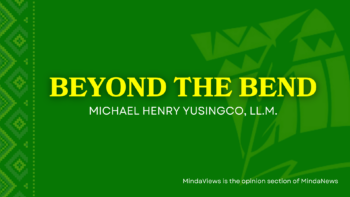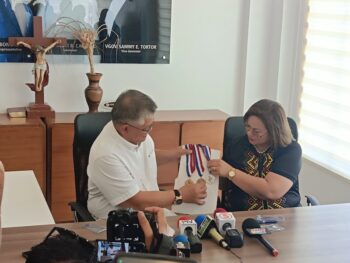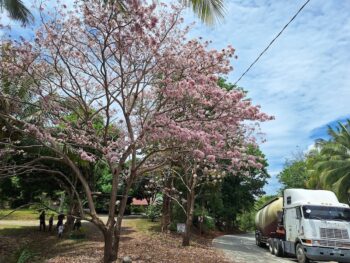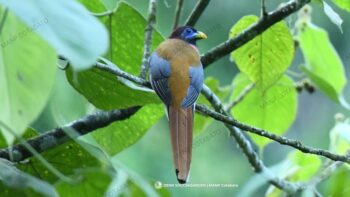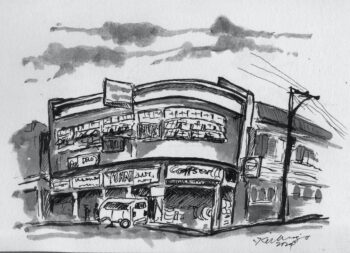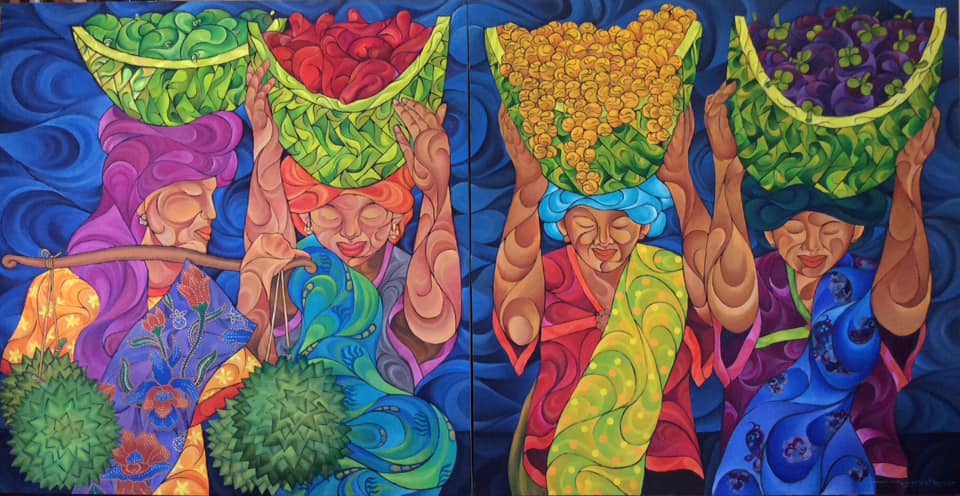
Image from the Facebook page of Rameer Tawasil
Back in 2012, I met this international “ukkilist”from the Sulu Archipelago in the heart of Malaysia for his collaboration with maestro Julfekar Ahmad Shah. Both of them are skilled artisans of the Bangsa Sug.
At Saloma Bistro in Kuala Lumpur, we sat for a coffee while planning our arts projects.
Mine was writing; his was painting. We planned to collaborate on writing the narratives of his visual works in the language of literature.
Before he arrived from Manila, I wrote something about him. He painted me later.
I told him that I was calling him “Rameeta,” a portmanteau of Rameer Tawasil. I showed him the meaning of Rameeta in different languages of the world to describe his talent as a visual artist with ukkil strokes.
One meaning was from the Indian language. Rameeta means “pleasing” and “loved,” to reflect his being pleasing and loved by everyone, not from his artistic side alone but from his kind attitude.
In Spanish, Rameeta means twig, spray, sprig, branch, bough, limb, leaf, and line, which suits him to be romantically named as such to describe his character as a painter and his rendition of his paintings.
It was during this meeting that I got different information about him and his works: where were his exhibits, collectors, and publications that featured him? Others came later, as I saw on the social media platform.
He is best known for using bright, strong, and bold colors in his paintings. The basic form and foundation of his art is “ukkil”, which led him to be tagged as the Tau Sug Ukkilist.
Ukkil, or Ukkilism, is a form of carving done by the Tau Sug even before the Spaniards introduced western painting to the Philippines and Sulu Archipelago.
His first solo, entitled “Tawasil,” was a sold out and was held in 2003 at The Garden Orchid Hotel, Zamboanga City. Last November 2010, he went to the European Art Exhibition Tour “Tanaw Mindanaw’’ at BrenART International Art Gallery, the most prestigious and largest one-level art gallery in the heart and center of the capital city of the European Union, Brussels, Belgium.
Flying to Belgium was a momentous one, as he was with the first Tau Sug and Muslim National Artist for Visual Arts, Abdulmari Imao. They both went to Stockholm, Sweden, on November 27, 2010, when the exhibition opened at Agueli Galleri.
In 2011, he was one of the six men on the official delegation to Beijing and Shandong, China, for a mural painting of the history of Sulu King Paduka Batara of 1417. He contributed to the architectural façade of the on-going renovation and development of the seven- billion peso Paduka Batara Shrine.
He received the 2006 “Peace Citation Award” from Peace Advocates Zamboanga (PAZ) for his rendition of the “Peace Dove” logo. The logo later became a peace campaign symbol in the country and abroad, and it has been widely used and included in the international symbol of birds.
As an advocate of peace and environmental conservation, he conducts art workshops on recycled and environmental art, organizes art shows, and directs musical concerts for peace and environmental conservation.
PAZ commissioned him for an art piece that was later unveiled as his second Public Peace Monumental Sculpture on November 29, 2010.
In 2006, his first sculpture, “SALAM,” was the marker for the (infamous) world-known Bud Dajo Battle. This was the year we climbed together to the peak of Bud Dajo for the 100th anniversary of the battle that happened in 1906.
During the climb, he brought a paper labeled 100-year-old, and asked us to sign it as the symbol of that commemoration.
His works have been featured in national and international publications, including in the “Space and Identity,” a book published by the Asian Center, the University of the Philippines, and the National Commission for Culture and the Arts.
He continued to strike his brush for peace in “Voices of Islam in Southeast Asian Studies,” a book published in Singapore.
While being featured in leading national newspapers and magazines and television networks Al Jazeera and CNN Philippines, he remained humble and gently kept peace in his brush to sail in the Sulu Sea.
His talent is qualified to be awarded and recognized as a National Artist for Visual Arts. His contributions to the arts, peace, culture and heritage make him also a regional and an indigenous artist. He should be accorded something for his living contributions to the development of indigenous arts in the region and in the country.
Many of his works were used as covers for the books we published, from one genre to another, from poetry books to academic books on Sulu culture.
I hope a resolution from the regional Bangsamoro parliament will be delivered to recognize his undying contribution to peace and heritage.
With his demise, at 54, I was not only losing a good friend but a mentor in the visual arts. I fondly called him Rudung Rameeta, as he called me Rudung Neldy.
Rameer Tawasil has been immortally “ukkiled” in the hearts of people forever.
As for one that had gone with a meaningful life, it is one that lives forever in the minds and hearts, for eternity.
I love you, peace. Let’s sail together. Layag Sug!
(Neldy Jolo, aka Nelson Dino, is Rameer Tawasil’s mentee on “ukkilism” for his research on the iconology of the ukkil motifs and designs of the Sulus. Aside from engaging in creative writing, he also spends his time as a faculty member of history and foreign languages at the Mindanao State University – Tawi-Tawi College of Technology and Oceanography. This piece was first posted on his FB page on 7 June 2023, a day after Rameer Tawasil passed on. MindaNews was granted permission to publish this)


